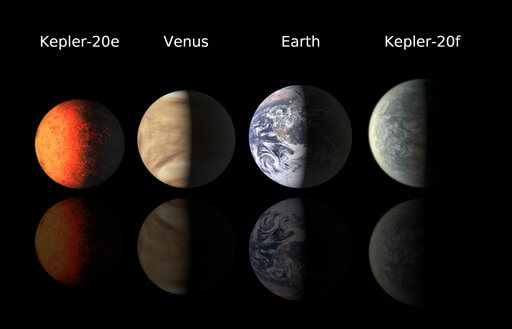
NASA announced on Tuesday that the Kepler mission has discovered the first Earth-size planets that orbit a “sun-like” star outside our solar system. According to the space agency, the two planets are not habitable because they are too close to their star, and are 1,000 lightyears away in the constellation Lyra.
The planets, dubbed Kepler-20e and Kepler-20f, are “the smallest exoplanets ever confirmed around a star like our sun,” NASA said in a statement.
“The primary goal of the Kepler mission is to find Earth-sized planets in the habitable zone,” Francois Fressin of the Harvard-Smithsonian Center for Astrophysics in Cambridge, Mass., said in a statement. “This discovery demonstrates for the first time that Earth-size planets exist around other stars, and that we are able to detect them.”
The planets are believed to be rocky, the agency said, adding that Kepler-20e and Kepler-20f orbit their star every 6.1 days and 19.6 days respectively. The two Earth-size planets reside in a five-planet system—three are larger than earth, but smaller than Neptune, the agency said.
NASA noted that such orbital periods means that they are very hot and not made for life. To put the heat in perspective, the agency said Kepler-20e is so hot at 1,400 degrees Fahrenheit that it would melt glass.
The find was also unexpected because of the arrangement of the planets, scientists said, because they are in alternating size from large to small. They also believe that the planets originated somewhere else and then migrated inward.
“The Kepler data are showing us some planetary systems have arrangements of planets very different from that seen in our solar system,” said Jack Lissauer, planetary scientist and Kepler science team member at NASA’s Ames Research Center in Moffett Field, Calif. “The analysis of Kepler data continue to reveal new insights about the diversity of planets and planetary systems within our galaxy.”
Despite learning that these planets aren’t made for life, scientists were still enthusiastic about the find and what the future holds.
“We are on the edge of our seats knowing that Kepler’s most anticipated discoveries are still to come,” said Natalie Batalha, Kepler deputy science team lead and professor of astronomy and physics at San Jose State University.


































